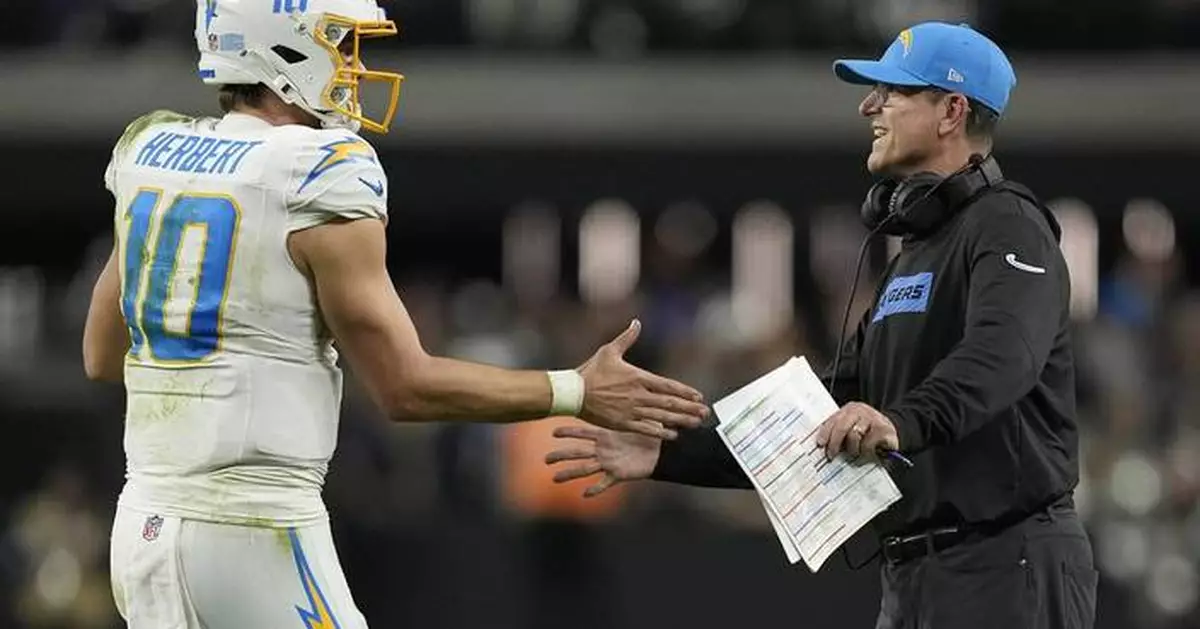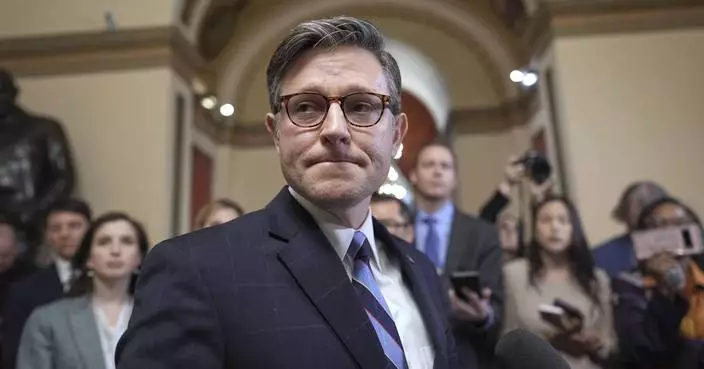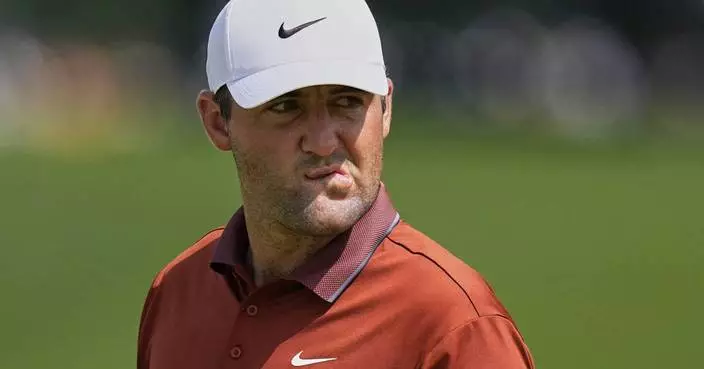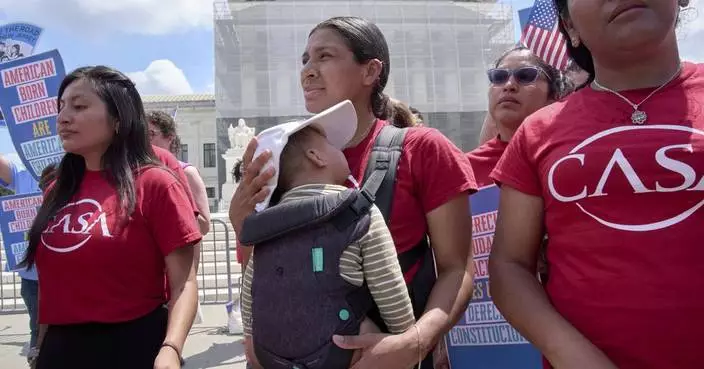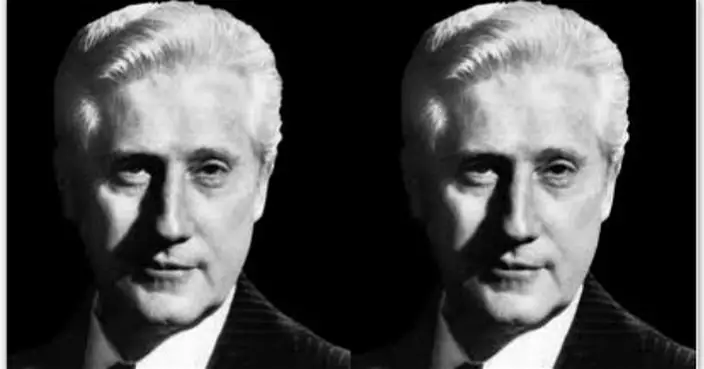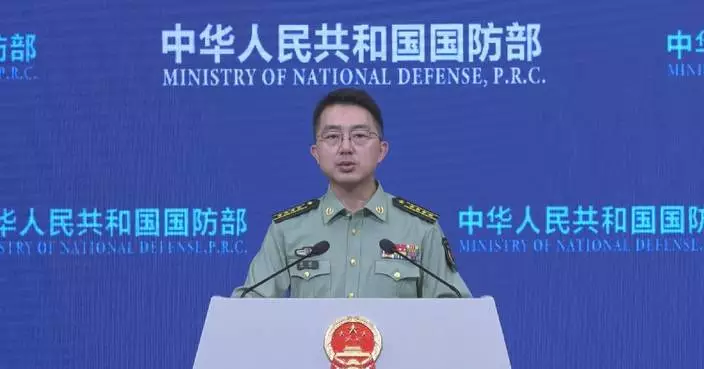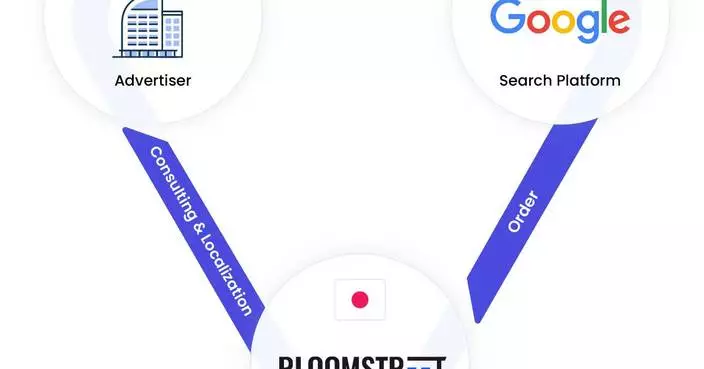EL SEGUNDO, Calif. (AP) — Jim Harbaugh’s football philosophy is rooted in being physical on both sides of the ball and wearing down an opponent.
However, when it comes to relating to his players, it is nothing but love, respect and adulation.
Like he did with the San Francisco 49ers and the University of Michigan, Harbaugh has turned around the fortunes of the Los Angeles Chargers. The Bolts finished 11-6 in the regular season — a six-win improvement — and are back in the playoffs, where they will face the Houston Texans on Saturday in an AFC wild-card round game.
“I just pretty much take on the personality of the team wherever I go,” Harbaugh said earlier this season. “The love Derwin James has for football, I gravitated to that immediately. The humble warrior Khalil Mack is, everything about Justin Herbert. The toughness, competitiveness and confidence of our players, I want to take on a little bit of that. I want a lot of that in my personality and in my life to keep going. It’s infectious.”
Harbaugh made an early impression on his new team. He participated in conditioning drills with players during offseason workouts. He also had players’ hometowns and recruiting rankings on their nameplates in the locker room to show how everyone got to the NFL.
Before the Sept. 8 opener against Las Vegas, players received a blue-collar work shirt from Harbaugh with an embroidered name patch and the Chargers lightning bolt logo. The shirts looked like those worn by filing station attendants and mechanics. Harbaugh said the shirts for him paid homage to his grandfather, Joe Cipiti, who worked in filling stations and was a self-taught mechanic who ended up teaching automobile mechanics at a trade school in Cleveland, but also to members of players' families who worked in the same type of jobs.
“I feel like that galvanized the team a lot because growing up as a kid, I saw a lot of people in the community who were hard workers. They always had that nameplate and always represented who that person was,” James said. “Just to have that means a lot to us.”
Harbaugh has continued the motivational gifts throughout the season.
After a 17-13 victory over the Falcons on Dec. 1, players received a black metal lunch pail with their names and one of Harbaugh’s favorite words — stalwart — on the front. There were also sweatshirts with the date and score after the Chargers 34-27 victory over the Bengals in a prime-time game on Nov. 17 and the 40-7 win at New England on Dec. 28 that wrapped up a playoff spot.
“To some people, it may seem cheesy, but I enjoy those life gifts,” James said. “It’s been helping to set the culture. We wouldn’t be in the postseason without all the details and stuff we’ve done doing.”
Offensive coordinator Greg Roman, who was also on Harbaugh’s staff at Stanford and San Francisco, said the area where Harbaugh has evolved the most has been relating his experiences as a player or a coach.
Roman said the stories from Harbaugh’s 15-year playing career or previous coaching stops can help reinforce the message at different points of the season.
Harbaugh’s stories — and there have been plenty — still resonate. Players still mention Harbaugh telling the story of remembering the day he was born on the first day of training camp as one of their favorites.
“This thing is always changing with the mood of the team; what just happened, and where are we in the season? I think it can create some great perspective and bring them into one vision instead of reading a line item on the PowerPoint,” Roman said. “With Jim, he has an art to his storytelling. There’s always a moral to the stories, always, like one of those After School specials when you were a kid."
The player Harbaugh might have had the most enormous effect on is Herbert. Harbaugh has been Herbert’s biggest supporter from the time he was hired and catches passes from his quarterback during pregame warmups.
Harbaugh also spends plenty of time in the quarterback room watching film with Herbert.
“The things we’ve learned from him ... I can’t tell you how much. So it’s cool to be able to share that and learn from him,” Herbert said.
NaVorro Bowman, who played for Harbaugh in San Francisco, has developed more of an appreciation for Harbaugh now that he is on his coaching staff with the Chargers.
Bowman knew Harbaugh loved football, but now he gets to see how much on a daily basis.
“Now I understand why he’s so good at what he does. He doesn’t waste a minute. I mean, if he can squeeze out everything in a minute, he will squeeze it out,” Bowman said. “I didn’t get to see or pay attention to it while playing. But now I understand why he’s so successful is because work is what he loves to do.”
Bowman also sees many similarities in the Chargers and the 2011 49ers, who went from 6-10 to 13-3 and reached the NFC championship game before losing to the New York Giants.
“No one expected us to be where we are today, and the only way that happened is because everyone here treats everyone with respect, respects each other’s space, and grinds,” he said.
AP NFL: https://apnews.com/hub/nfl
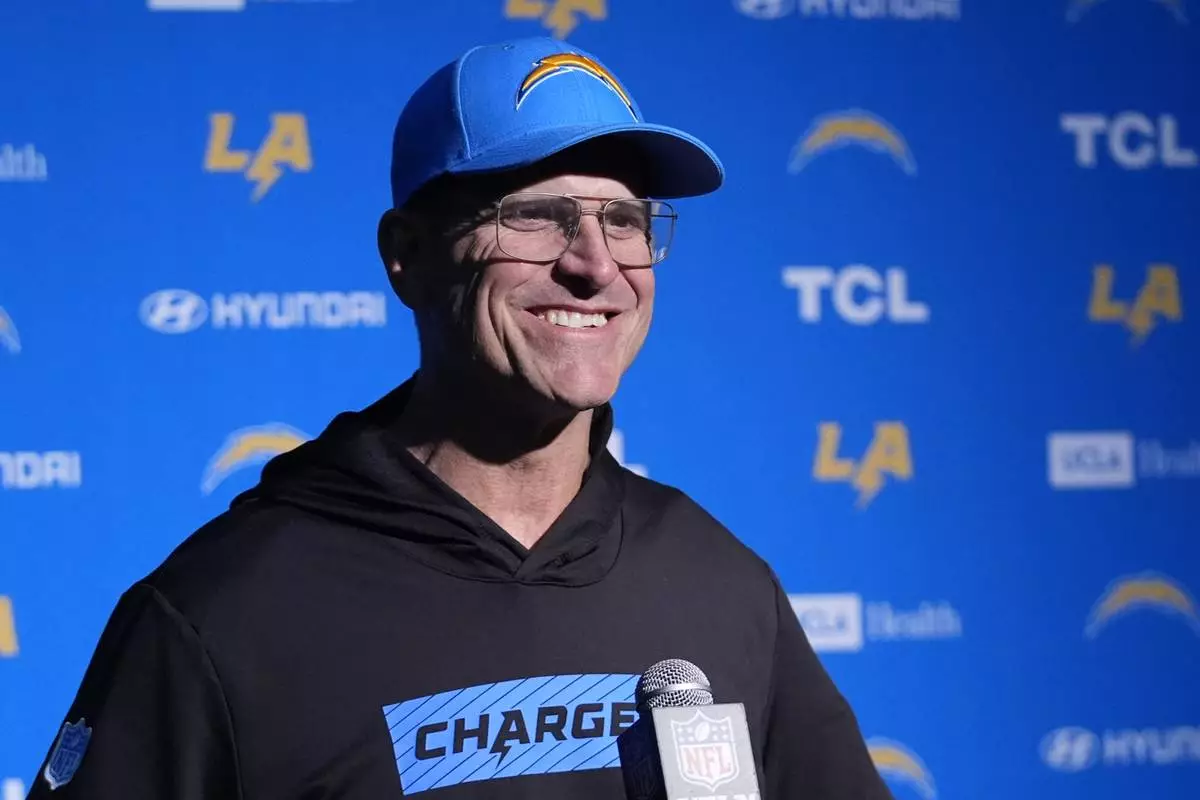
Los Angeles Chargers head coach Jim Harbaugh listens to a reporter's question during a news conference following an NFL football game, Saturday, Dec. 28, 2024, in Foxborough, Mass. (AP Photo/Robert F. Bukaty)

Los Angeles Chargers quarterback Justin Herbert (10) celebrates with head coach Jim Harbaugh during the second half of an NFL football game against the Las Vegas Raiders in Las Vegas, Sunday, Jan. 5, 2025. (AP Photo/John Locher)
ATLANTA (AP) — A pregnant woman in Georgia was declared brain-dead after a medical emergency and doctors have kept her on life support for three months so far to allow enough time for the baby to be born and comply with Georgia’s strict anti-abortion law, family members say.
She could be kept in that state for months more.
The case is the latest consequence of abortion bans introduced in some states since the Supreme Court overturned Roe v. Wade three years ago.
Adriana Smith, a 30-year-old mother and nurse, was declared brain-dead — meaning she is legally dead — in February, her mother, April Newkirk, told Atlanta TV station WXIA.
Newkirk said her daughter had intense headaches more than three months ago and went to Atlanta's Northside Hospital, where she received medication and was released. The next morning, her boyfriend woke to her gasping for air and called 911. Emory University Hospital determined she had blood clots in her brain and she was declared brain-dead.
Newkirk said Smith is now 21 weeks pregnant. Removing breathing tubes and other life-saving devices would likely kill the fetus.
Northside did not respond to a request for comment Thursday. Emory Healthcare said it could not comment on an individual case because of privacy rules, but released a statement saying it “uses consensus from clinical experts, medical literature, and legal guidance to support our providers as they make individualized treatment recommendations in compliance with Georgia’s abortion laws and all other applicable laws. Our top priorities continue to be the safety and wellbeing of the patients we serve.”
Smith's family says Emory doctors have told them they are not allowed to stop or remove the devices that are keeping her breathing because state law bans abortion after cardiac activity can be detected — generally around six weeks into pregnancy.
The law was adopted in 2019 but not enforced until after Roe v. Wade was overturned in the 2022 Dobbs v. Jackson Women’s Health Organization ruling, opening the door to state abortion bans. Twelve states are enforcing bans on abortion at all stages of pregnancy and three others have bans like Georgia's that kick in after about six weeks.
Like the others, Georgia's ban includes an exception if an abortion is necessary to maintain the woman's life. Those exceptions have been at the heart of legal and political questions, including a major Texas Supreme Court ruling last year that found the ban there applies even when there are major pregnancy complications.
Smith's family, including her five-year-old son, still visit her in the hospital.
Newkirk told WXIA that doctors told the family that the fetus has fluid on the brain and that they're concerned about his health.
“She’s pregnant with my grandson. But he may be blind, may not be able to walk, may not survive once he’s born,” Newkirk said. She has not said whether the family wants Smith removed from life support.
Monica Simpson, executive director of SisterSong, the lead plaintiff in a lawsuit challenging Georgia’s abortion law, said the situation is problematic.
"Her family deserved the right to have decision-making power about her medical decisions,” Simpson said in a statement. “Instead, they have endured over 90 days of retraumatization, expensive medical costs, and the cruelty of being unable to resolve and move toward healing.”
Lois Shepherd, a bioethicist and law professor at the University of Virginia, said she does not believe life support is legally required in this case.
But she said whether a state could insist Smith remains on life support is uncertain since the overturning of Roe, which found that fetuses do not have the rights of people.
“Pre-Dobbs, a fetus didn’t have any rights,” Shepherd said. “And the state’s interest in fetal life could not be so strong as to overcome other important rights, but now we don’t know.”
The situation echoes a case in Texas more than a decade ago when a brain-dead woman was kept on life support for about two months because she was pregnant. A judge eventually ruled that the hospital was misapplying state law, and life support was removed.
Brain death in pregnancy is rare. Even rarer still are cases in which doctors aim to prolong the pregnancy after a woman is declared brain-dead.
“It’s a very complex situation, obviously, not only ethically but also medically,” said Dr. Vincenzo Berghella, director of maternal fetal medicine at Thomas Jefferson University in Philadelphia.
A 2021 review that Berghella co-authored scoured medical literature going back decades for cases in which doctors declared a woman brain-dead and aimed to prolong her pregnancy. It found 35.
Of those, 27 resulted in a live birth, the majority either immediately declared healthy or with normal follow-up tests. But Berghella also cautioned that the Georgia case was much more difficult because the pregnancy was less far along when the woman was declared brain dead. In the 35 cases he studied, doctors were able to prolong the pregnancy by an average of just seven weeks before complications forced them to intervene.
“It’ s just hard to keep the mother out of infection, out of cardiac failure,” he said.
Berghella also found a case from Germany that resulted in a live birth when the woman was declared brain dead at nine weeks of pregnancy — about as far along as Smith was when she died.
Georgia's law confers personhood on a fetus. Those who favor personhood say fertilized eggs, embryos and fetuses should be considered people with the same rights as those already born.
Georgia state Sen. Ed Setzler, a Republican who sponsored the 2019 law, said he supported Emory’s interpretation.
“I think it is completely appropriate that the hospital do what they can to save the life of the child,” Setzler said. “I think this is an unusual circumstance, but I think it highlights the value of innocent human life. I think the hospital is acting appropriately.”
Setzler said he believes it is sometimes acceptable to remove life support from someone who is brain dead, but that the law is “an appropriate check” because the mother is pregnant. He said Smith's relatives have “good choices,” including keeping the child or offering it for adoption.
Georgia’s abortion ban has been in the spotlight before.
Last year, ProPublica reported that two Georgia women died after they did not get proper medical treatment for complications from taking abortion pills. The stories of Amber Thurman and Candi Miller entered into the presidential race, with Democrat Kamala Harris saying the deaths were the result of the abortion bans that went into effect in Georgia and elsewhere after Dobbs.
Mulvihill reported from Cherry Hill, New Jersey. Associated Press journalists Lisa Baumann, Kate Brumback, Sudhin Thanawala, Sharon Johnson and Charlotte Kramon contributed.

Emory University Hospital Midtown is seen on Thursday, May 15, 2025, in Atlanta. (AP Photo/Brynn Anderson)
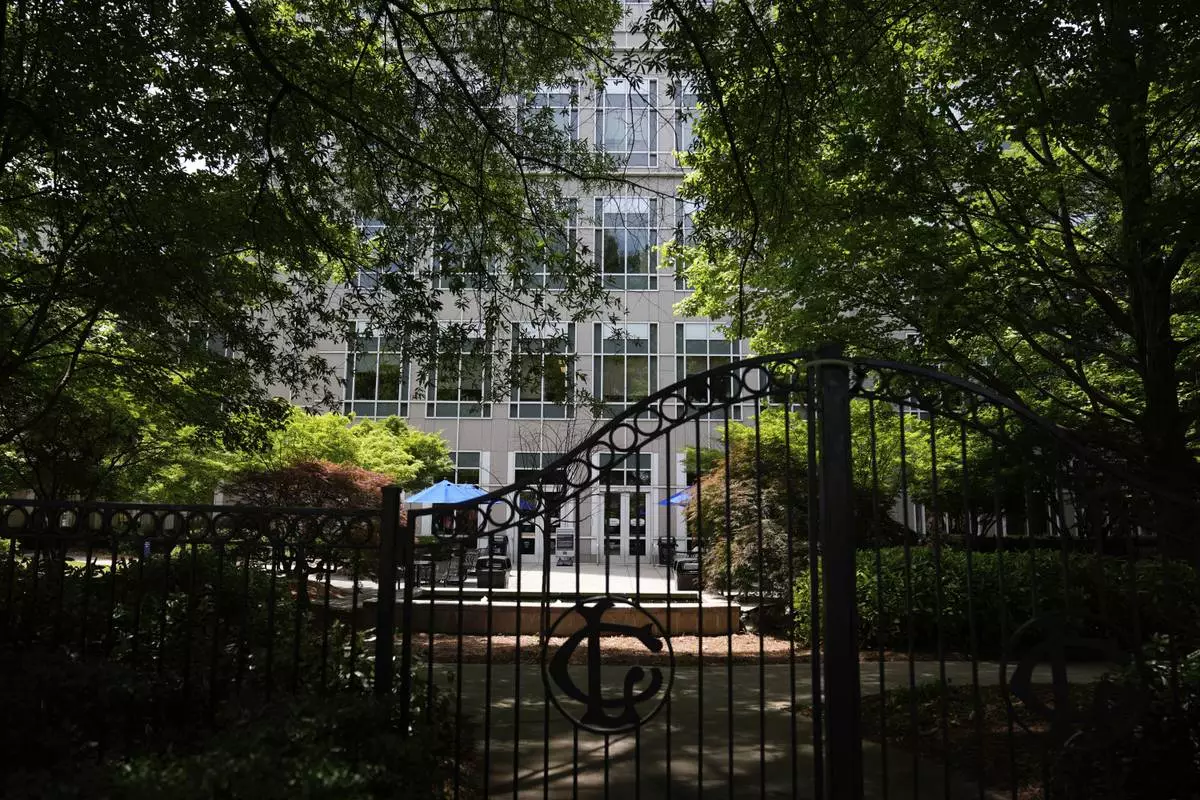
Emory University Hospital Midtown is seen on Thursday, May 15, 2025, in Atlanta. (AP Photo/Brynn Anderson)

Emory University Hospital Midtown is seen on Thursday, May 15, 2025, in Atlanta. (AP Photo/Brynn Anderson)

Emory University Hospital Midtown is seen on Thursday, May 15, 2025, in Atlanta. (AP Photo/Brynn Anderson)
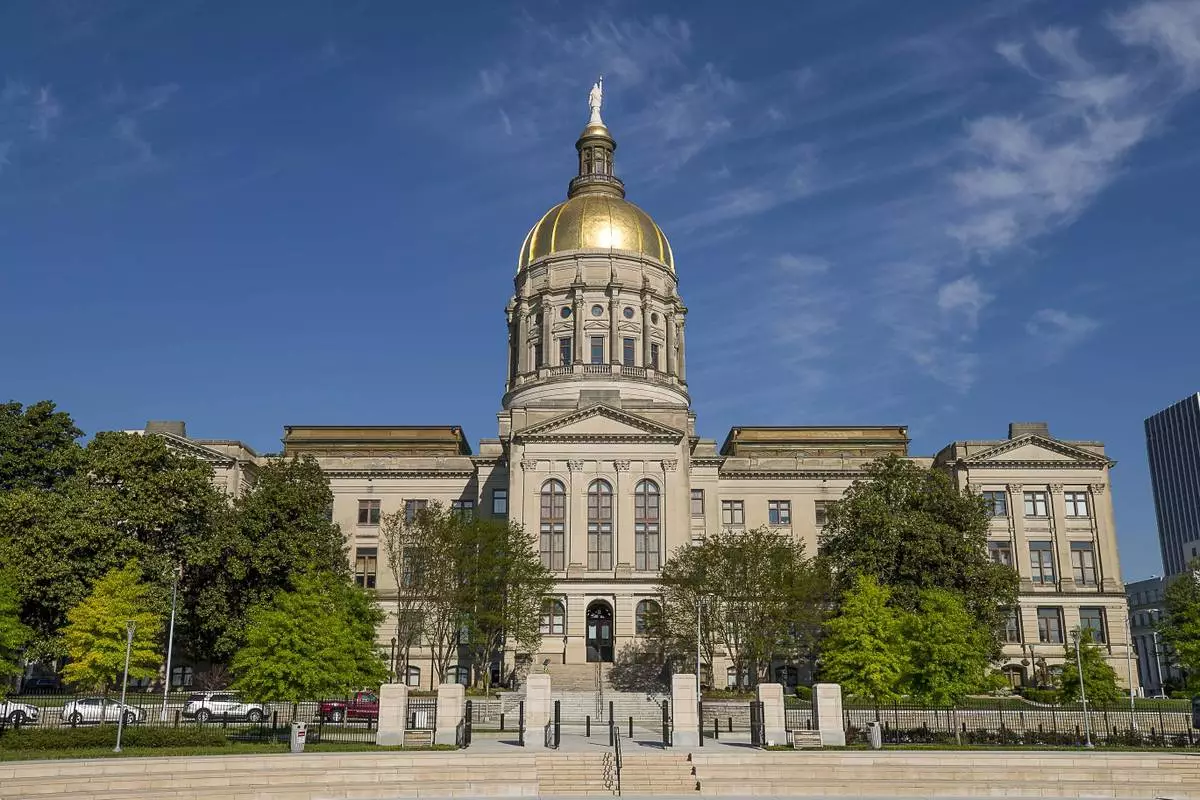
FILE - The Georgia State Capitol is seen from Liberty Plaza in downtown Atlanta, April 6, 2020. (Alyssa Pointer/Atlanta Journal-Constitution via AP, File)




